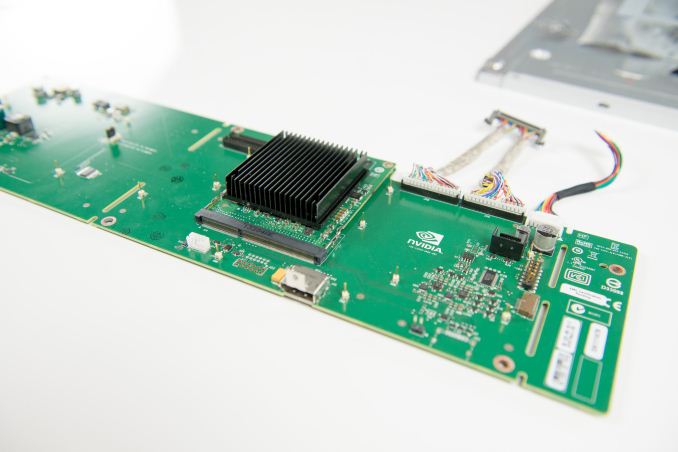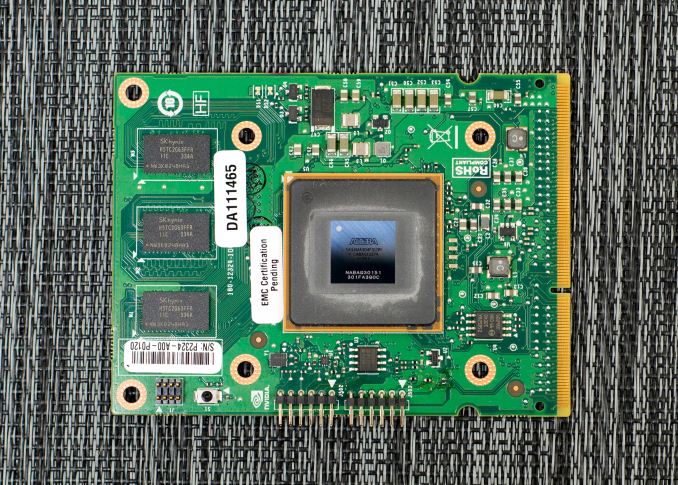NVIDIA G-Sync Review
by Anand Lal Shimpi on December 12, 2013 9:00 AM ESTFinal Words
After spending a few days with G-Sync, I’m just as convinced as I was in Montreal. The technology, albeit a relatively simple manipulation of display timing, is a key ingredient in delivering a substantially better gaming experience.
In pathological cases the impact can be shocking, particularly if you’re coming from a 60Hz panel today (with or without v-sync). The smoothness afforded by G-Sync is just awesome. I didn’t even realize how much of the v-sync related stutter I had simply come to accept. I’d frequently find a scene that stuttered a lot with v-sync enabled and approach it fully expecting G-Sync to somehow fail at smoothing things out this time. I always came away impressed. G-Sync also lowered my minimum frame rate requirement to not be distracted by stuttering. Dropping below 30 fps is still bothersome, but in all of the games I tested as long as I could keep frame rates north of 35 fps the overall experience was great.
In many situations the impact of G-Sync can be subtle. If you’re not overly bothered by tearing or are ok with v-sync stuttering, there’s really nothing G-Sync can offer you. There’s also the fact that G-Sync optimizes for a situation that may or may not be so visible 100% of the time. Unlike moving to a higher resolution or increasing quality settings, G-Sync’s value is best realized in specific scenarios where there’s a lot of frame rate variability - particularly between 30 and 60 fps. Staying in that sweet spot is tougher to do on a 1080p panel, especially if you’ve already invested in a pretty fast video card.
If you’re already running games at a fairly constant 60 fps, what G-Sync will allow you to do is to crank up quality levels even more without significantly reducing the smoothness of your experience. I feel like G-Sync will be of even more importance with higher resolution displays where it’s a lot harder to maintain 60 fps. Ideally I’d love to see a 2560 x 1440 G-Sync display with an IPS panel that maybe even ships properly calibrated from the factory. I suspect we’ll at least get the former.
There's also what happens if game developers can assume the world is running on displays with variable refresh rates. All of the sudden targeting frame rates between 30 and 60 fps becomes far less of a tradeoff.
NVIDIA hasn’t disclosed much about G-Sync pricing, although ASUS has already given us a little guidance. The VG248QE currently sells for $280 on Newegg, while the upcoming G-Sync enabled flavor will apparently be sold for $400. The $120 premium can be a tough pill to swallow. A 40% increase in display cost is steep, which is another reason why I feel like NVIDIA might have a little more success pushing G-Sync as a part of a higher end display. On the flip side NVIDIA could easily get those costs down by migrating from an FPGA to an ASIC, although to justify that move we’d have to see pretty broad adoption of G-Sync.
Some system integrators will be selling the aftermarket upgraded VG248QE between now and CES, but you can expect other displays to be announced over the coming months. NVIDIA still hasn't figured out if/how it wants to handle end user upgrades for those who already own VG248QE displays.
I feel like NVIDIA is slowly but surely assembling a bunch of components of a truly next-generation gaming experience. With all of the new consoles launched, the bar is set for the next several years. PCs already exceed what consoles are capable of in terms of performance, but the focus going forward really needs to be on improving ease of use as well as the rest of the experience. Things like GeForce Experience are a step in the right direction, but they need far more polish and honestly, integration into something like Steam. G-Sync just adds to the list. For PC gaming to continue to thrive, it needs to evolve into something even more polished than it is today. It’s not enough to just offer higher resolution and a better looking image than what you can get on other platforms, it’s very important to provide a smoother and more consistent experience as well. G-Sync attempts to and succeeds at doing just that.
With G-Sync enabled, I began to expect/demand more visually from my games. Aliasing and other rendering imperfections were far more pronounced now that a big portion of stuttering was removed. G-Sync isn't the final solution, but rather the first on a long list of things that need improving. There are other use cases for G-Sync outside of gaming as well. Streaming video where bandwidth constraints force a variable frame rate is another one I’ve heard passed around.
Although G-Sync is limited to NVIDIA hardware (GeForce GTX 650 Ti Boost or greater), the implementation seems simple enough that other manufacturers should be able to do something similar. That’s obviously the biggest issue with what we have here today - it only works with NVIDIA hardware. For die hard NVIDIA fans, I can absolutely see a G-Sync monitor as being a worthy investment. You might just want to wait for some more displays to hit the market first.












193 Comments
View All Comments
haukionkannel - Thursday, December 12, 2013 - link
Un TV there is constant 24 screens per second standard, so the display is always in sync if it does support 24 standard... The problem with games is that there is variance in sync speed, in movie and TV material the speed is allways same, so the problem is not in there...The problem with movies is that 24 FPS is too little. Even the "super" smooth 48 FPS that is used in Hobbit is not so great even some people think that it does destroy the "movie feel"...
I think that Peter Jackson should have got it 96 FPS so it would be in par with good ole CRT screens! IMHO
nirvgorilla - Thursday, December 12, 2013 - link
"If you’re not overly bothered by tearing or are ok with v-sync stuttering, there’s really nothing G-Sync can offer you."Huh? This is an incomplete review. You didn't even run any emulated games which will actually have the most benefit from G-Sync.
Mortal Kombat in MAME: http://i.imgur.com/Jk6i8Tb.jpg
Also, you didn't answer any of these important questions:
1. Test Mortal Kombat in MAME. It runs at 54hz. We need to see non-60hz games running smoothly.
2. Test R-Type in MAME. It runs at 55hz. We need to see non-60hz games running smothly.
3. Using GeForce Experience 1.8 and ShadowPlay, does it record the h.264 .mp4 file and playback in VLC using the exact refresh you were playing in?
4. Mortal Kombat II in MAME runs at 54.7hz and we want to know if G-sync understands the decimals or is it only integers. Does it run at 54.7hz or 55hz?
5. Is full screen needed for G-Sync or can it be used in Full Screen Windowed (Borderless)?
6. Is G-Sync Direct3D only? Do OpenGL games like Quake III Arena work?
bondfc11 - Thursday, December 12, 2013 - link
The article stated it must be full screen - windowed defaults to vsuck - I mean vsyncjramskov - Thursday, December 12, 2013 - link
So that's why the rMBP reviews are late - you've been gaming ;)sheh - Thursday, December 12, 2013 - link
I wonder why it requires at least 30Hz to work. Kinda unfortunate. Supporting as low as 20Hz would still be very useful, and even lower might help every now and then.Traciatim - Thursday, December 12, 2013 - link
Below 30hz the pixels on the screen would fade causing flickering, so the screen is force refreshed with the latest complete frame if no new frame is ready.sheh - Thursday, December 12, 2013 - link
Backlight is static. Aren't TFT pixels also static until controlled by voltage?CoolBOBob1 - Thursday, December 12, 2013 - link
According to another article it has to due with pixel degradation, so a pixel has to be refreshed within 33 ms or so.Hrel - Thursday, December 12, 2013 - link
Based on this it seems like we'd all be better served by 240hz 1080p displays than Gsync. More affordable, allow us to use more affordable GPU's (instead of attempting to power a 4k display) and TV's it would allow for that AMAZING feature that apparently no one uses where you can have split screen multi-player with each person having the full screen.DesktopMan - Friday, December 13, 2013 - link
Higher static refresh rate requires more interface bandwidth. Abrash talks about 1000hz panels, which would be great, but the current interfaces aren't anywhere near there in bandwidth yet.You can have splitscreen multiplayer with two people at 120hz (with glasses of course). At 240hz you could have four player, but then each player would have the same V-Sync issues a regular 60hz monitor has today.